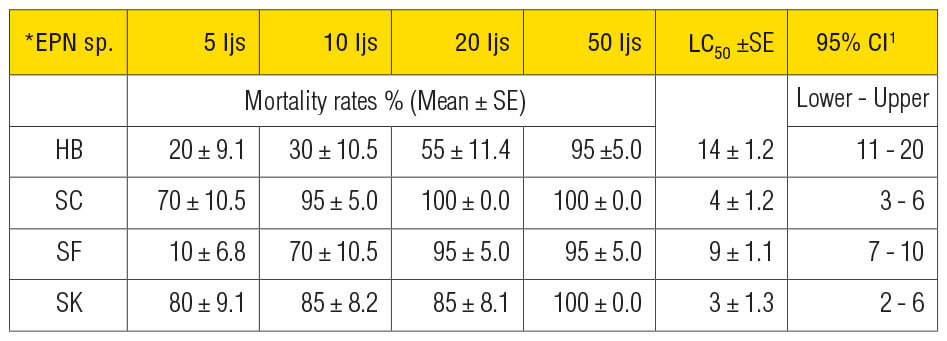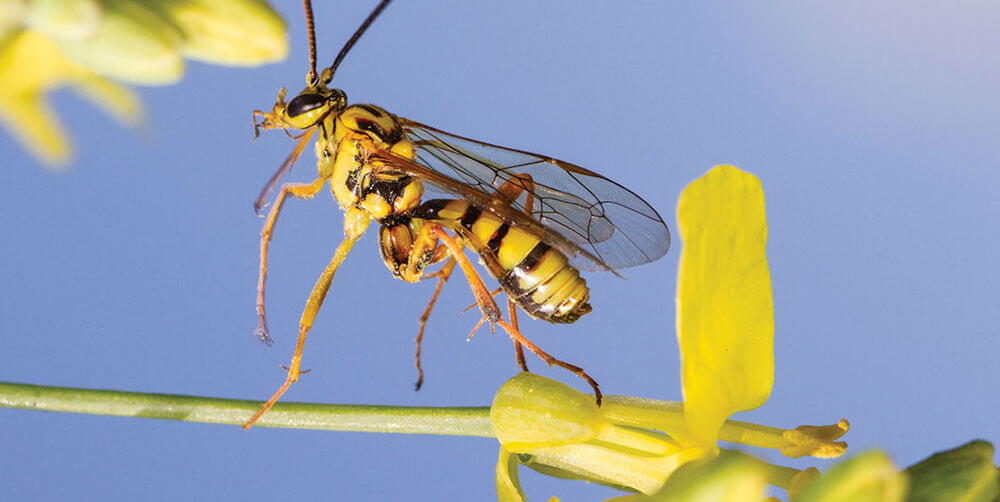Biocontrol organisms reduce cutworms in canola
Pre-season is a good opportunity to familiarize yourself with a few biocontrol organisms that might be in your canola field or could be biocontrol options in the coming years. Three research studies were highlighted in a Canola Research Hub blog investigating nematodes, parasitoids and other insect pest predators that impact cutworm (and other insect pest) populations in canola crops.
Quantifying biocontrol efficacy with predatory nematodes
One potential biocontrol option is entomopathogenic nematodes (or EPNs). These predatory nematodes are soil-dwelling round worms that specialize in parasitizing insects, including canola pest species. With limited research on EPNs, Paul Tiege and Shabeg Briar investigated their feasibility as biocontrol agents.
In general, mortality rates of most insects increased with increasing nematode concentrations and results of diamondback moth larvae, lygus bugs cabbage root maggots and black cutworm mortality assessed after 72 hours of exposure to the nematodes were encouraging.
Table. Mortality percentage and lethal concentrations to 50 per cent (LC50) of black cutworms (Agrotis ipsilon) larvae exposed to different entomopathogenic nematode (EPN) sp. at four concentrations of infective juveniles (Ijs)/cm2 in sand cup bioassays.

CI1:Confidence Interval; LC values calculated using Probit Analysis.
For more detail on these projects, please read the blog post titled, “Active and emerging biocontrol organisms to watch for in canola,” at canolaresearch.ca
Biocontrol of canola cutworms by parasitoids
Barb Sharanowski and Yvonne Lawley’s research observed sixteen species of parasitic wasps that attack cutworms in the Prairies. Though levels were often too low to reduce cutworms below economic levels, parasitism rates of three to 26 per cent were recorded.
An additional study within this project assessed the efficacy of environmentally-friendly, naturally occurring pest control agents called entomopathogenic fungi (EPF) as biocontrol agents of cutworms. Though future research on this topic is needed to assess their suitability other Prairie provinces, the 2012-14 cutworm data in Manitoba reported that EPF caused greater mortality to cutworms than parasitic wasps, suggesting good promise for this biocontrol option.
Cutworm identification and parasitoid discovery
During Kevin Floate’s five-year project, a European species of parasitic wasp (Cotesia vanessae) was discovered in North America for the first time. Laboratory tests proved the wasp has potential to parasitize 34 species of caterpillars, including many cutworm species that affect Canadian crops.
The entomology research conducted throughout this project also yielded a well-illustrated, publicly-available field guide called ‘Cutworm Pests of Crops on the Canadian Prairies, which provides identification and control information of 20 cutworm pest species.





